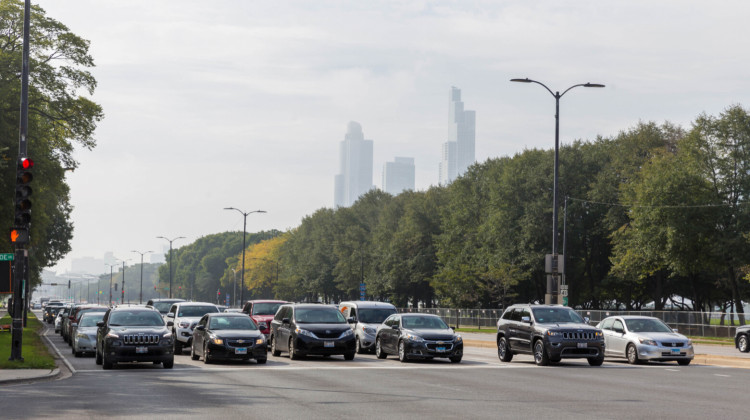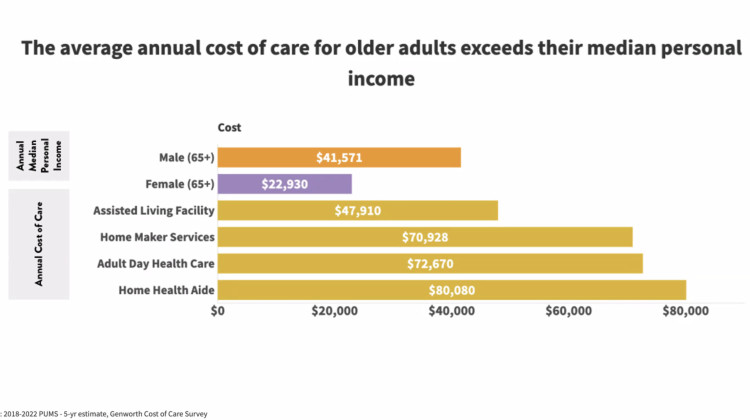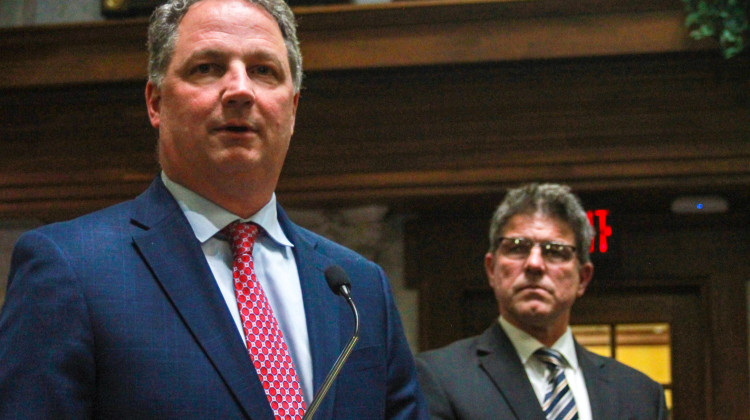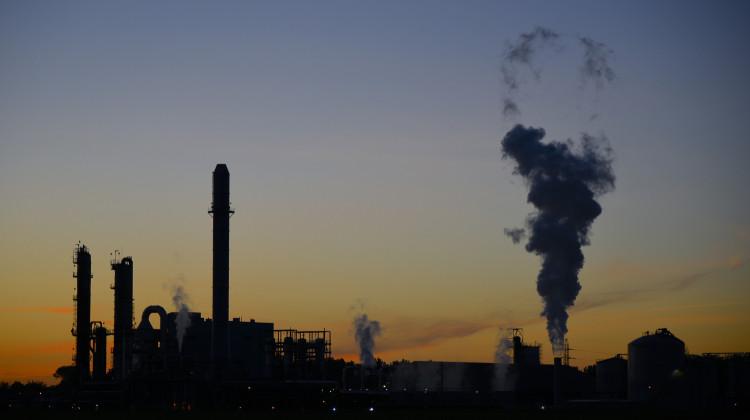
Chicago traffic at an intersection in 2019. IUPUI professor Gabriel Filippelli said the lack of cars on the road reduced carbon emissions during the Stay-At-Home orders last year.
Marco Verch/FlickrThough carbon emissions went down during Stay-At-Home orders last year, the pandemic may not have had as much of an effect on air quality in 2020 as we once thought. A professor at IUPUI says as restrictions lifted, carbon emissions went right back up.
IUPUI earth sciences professor Gabriel Filippelli and his team found that, during the lockdown, Indianapolis’s air quality improved by 25 percent compared to the previous five years. They saw similar decreases in the other cities they studied.
But when businesses reopened and people started driving again, Filippelli said the trend reversed. As a result, he said carbon emissions in the U.S. only went down by about 12 percent in 2020 compared to the previous year.
Emissions could climb even more as people get vaccinated and more restrictions are lifted.
“So it wouldn't be surprising if there's no gap at all. That we're back to, in terms of climate, business as usual — which is not a good business to be in," Filippelli said.
Filippelli said the data shows the U.S. will have to be much more aggressive about reducing carbon emissions to meet climate goals.
But he says it also shows that individuals can have a big impact on the air quality where they live — especially when it comes to transportation. The fact that the city of Indianapolis reduced its air pollution by 25 percent is pretty significant.
“And that's local air pollution, right? So it's not somebody in another state impacting our air, you know, it's people in Indianapolis improving their own air by not using their vehicles. So think about that for a while," Filippelli said.
Filippelli said, globally, carbon emissions last year only went down about 6 percent — partly because China had a stricter lockdown and was able to open up manufacturing businesses sooner.
Contact reporter Rebecca at rthiele@iu.edu or follow her on Twitter at @beckythiele.
Indiana Environmental reporting is supported by the Environmental Resilience Institute, an Indiana University Grand Challenge project developing Indiana-specific projections and informed responses to problems of environmental change.
 DONATE
DONATE








 View More Programs
View More Programs

 Support WFYI. We can't do it without you.
Support WFYI. We can't do it without you.